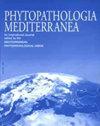Trunk anatomy of asymptomatic and symptomatic grapevines provides insights into degradation patterns of wood tissues caused by Esca-associated pathogens
IF 1.9
3区 农林科学
Q2 AGRONOMY
引用次数: 4
Abstract
Wood colonizing fungi are specialists that exploit the lignocellulose of cell wall components in host wood cylinders as a carbon sources. Some of these specialized fungi, including Fomitiporia mediterranea (Fmed) and Phaeomoniella chlamydospora (Pch), cause the disease Esca of grapevine. This disease complex includes grapevine leaf stripe disease (GLSD) of canopies and white rot and black wood streaking in trunks. The present study gained insights into the activity of Esca pathogens in host xylem of the trunk tissues at an anatomical level. Lesions with white rot and brown wood streaking were microscopically analyzed, and the structures of affected tissues were compared with intact xylem. In trunks with white rot, demarcation zones separated intact tissues from the lesions. Immediately adjacent to the demarcation zones, cell wall decomposition initiated in the xylem. At this initial stage, cavities appeared in the secondary cell walls of libriform fibres, which expanded and closely resembled the degradation pattern of soft rot. In the advanced stage, the fibre cell walls were completely decomposed, and the vessels were attacked with a degradation pattern similar to white rot. Only remnants of the xylem elements remained, forming amorphous matrices. These decomposition patterns occurred in field samples and in wood cores artificially infected with Fmed. The obvious compartmentalization of the tissue affected by Fmed indicated a defense reaction in the xylem, according to the CODIT model. In contrast, brown wood streaking affected only small groups of vessels, adjacent libriform fibres and parenchyma. Dark inclusions in cells and tyloses in vessels indicate a defense reaction against the pathogens causing brown wood streaking. Artificial inoculation of sterile wood cores with Pch confirmed the contribution of this pathogen to brown wood streaking. This research provides insights into the structural and functional anatomy of intact and infected tissues of grapevines, which clarify the etiology of Esca, and provide new knowledge for developing new approaches to control of this disease complex.无症状和有症状葡萄藤的树干解剖为Esca相关病原体引起的木材组织降解模式提供了见解
木材定殖真菌是利用宿主木材圆柱体中细胞壁成分的木质纤维素作为碳源的专家。这些特殊真菌中的一些,包括中地Fomitiporia mediteranea(Fmed)和厚垣黄单胞菌(Pch),引起葡萄Esca病。该病包括葡萄冠层叶条纹病(GLSD)和树干白腐病和黑木条纹病。本研究从解剖学角度深入了解了Esca病原体在树干组织寄主木质部的活性。对具有白腐病和褐色木质条纹的损伤进行了显微镜分析,并将受影响组织的结构与完整的木质部进行了比较。在有白腐病的树干中,分界区将完整的组织与病变分开。紧邻分界区,木质部开始细胞壁分解。在这个初始阶段,libriform纤维的次生细胞壁上出现了空腔,空腔膨胀,与软腐的降解模式非常相似。在晚期,纤维细胞壁完全分解,血管受到类似白腐的降解方式的攻击。只剩下木质部元素的残余,形成无定形基质。这些分解模式发生在野外样品和人工感染Fmed的木芯中。根据CODIT模型,受Fmed影响的组织的明显区室化表明木质部中存在防御反应。相比之下,褐色木材条纹只影响到邻近自由纤维和薄壁组织的一小群血管。细胞中的深色内含物和血管中的泰洛糖表明对引起棕色木材条纹的病原体有防御反应。用Pch人工接种无菌木芯证实了该病原体对褐木条纹的贡献。这项研究深入了解了葡萄藤完整组织和感染组织的结构和功能解剖,阐明了Esca的病因,并为开发控制这种疾病复合体的新方法提供了新的知识。
本文章由计算机程序翻译,如有差异,请以英文原文为准。
求助全文
约1分钟内获得全文
求助全文
来源期刊

Phytopathologia Mediterranea
生物-植物科学
CiteScore
4.40
自引率
8.30%
发文量
28
审稿时长
6-12 weeks
期刊介绍:
Phytopathologia Mediterranea is an international journal edited by the Mediterranean Phytopathological Union. The journal’s mission is the promotion of plant health for Mediterranean crops, climate and regions, safe food production, and the transfer of new knowledge on plant diseases and their sustainable management.
The journal deals with all areas of plant pathology, including etiology, epidemiology, disease control, biochemical and physiological aspects, and utilization of molecular technologies. All types of plant pathogens are covered, including fungi, oomycetes, nematodes, protozoa, bacteria, phytoplasmas, viruses, and viroids. The journal also gives a special attention to research on mycotoxins, biological and integrated management of plant diseases, and the use of natural substances in disease and weed control. The journal focuses on pathology of Mediterranean crops grown throughout the world.
The Editorial Board of Phytopathologia Mediterranea has recently been reorganised, under two Editors-in-Chief and with an increased number of editors.
 求助内容:
求助内容: 应助结果提醒方式:
应助结果提醒方式:


